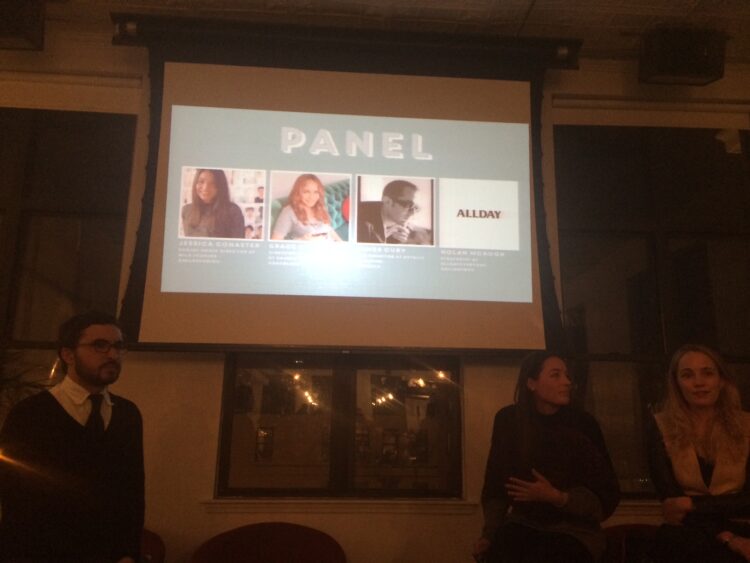Wantering hosted a Fashion Loves Tumblr event at The Projective Space on Manhattan’s lower east side. James Cury, Web Director of Details Magazine; Grace Atwood, Director of Social Media at Bauble Bar; Jessica Conaster, Social Media Director of Milk Studios; and Nolan McHugh, Strategist of All Day Everyday, were among the expert on the panel, which was moderated by Wantering Co-Founder, Nick Molnar, and Evangelist at Wantering, Kathleen Ong.
Each contributed to how Tumblr is playing a significant role in their businesses or companies through social media and marketing.
Tumblr is responsible for creative blogs, campaigns, and insightful contests as key methods in the development of sharing brand content amongst users interested in fashion.
Wantering is a start up based in Vancouver, BC, whose online presence has steadily risen up the e-commerce chain since its launch in 2011. Their search engine is an effective tool for alerting shopaholics as to when size, color, or a hot must have of the season is available and where. Wantering informs users with emailed reminders and recommendations on trends too. Their system indexes over one million products from over 20,000 brands from hundreds of stores. This is referred to as “a cool hunting algorithm.”
A majority of the repeat visits to their site can be attributed to Tumblr (the 29th largest site on net, with over 110 million active accounts), where large communities are formed by fashionistas.
When building a site or a blog geared toward this industry, a detailed outline for your business project must be devised before committing to a vision. “You must ask what is the goal of your platform,” said McHugh.,
A probable focus could be on the attraction of loyal users believing in the name and integrity of a product—customers who associate your brand with a style that defines them. Another could also be an audience of people with ample resources. Why is one willing to purchase something just because it is found at a premier destination? It has to be the labeling.
“Burberry kills it,” said Conaster, explaining that a name as ubiquitous as Burberry enables savvy consumers, many of whom are loyal social media users who visit the site because of its stature. E-commerce is a staple in how this retailer is exceeding quarterly and annual sales margins, thanks to a solid flow of web traffic contingent upon sites like Pinterest, Tumblr, and Google Analytics.
In fact, Pinterest has grown into the fastest growing social media platform with the strongest demographic. Over 70 million people flock to it in tracking style by placing pins on boards of desired looks and outfits. This promotes consumer interaction, sharing, ingenuity – and generates purchasing.
The panel agreed that a subliminal influence like Pinterest does accentuate, if not persuade, a person’s decision to follow a trend. Certainly, this social media force is driving sales and producing a new framework for index expectations.
Curry offered advice about networking, saying that “One must treat social media as a portal. The common denominator is to put it to the front of your brand.”
Both Atwood and Conaster agreed that Facebook’s model isn’t nearly as effective or utilized for increasing audience and revenue as are other social media darlings whose main target is to educate and reward consumers handsomely with incentives to buy.
This reason of where to click and what to adhere to is tied to influence. Aside from the purchase itself, there is the user experience, a psychology that engages consumers to become acquainted with the story behind a company, and to ultimately feel as though they’ve purchased something of value that others are vying to have.
Like fashion itself, it’s all about perception.





